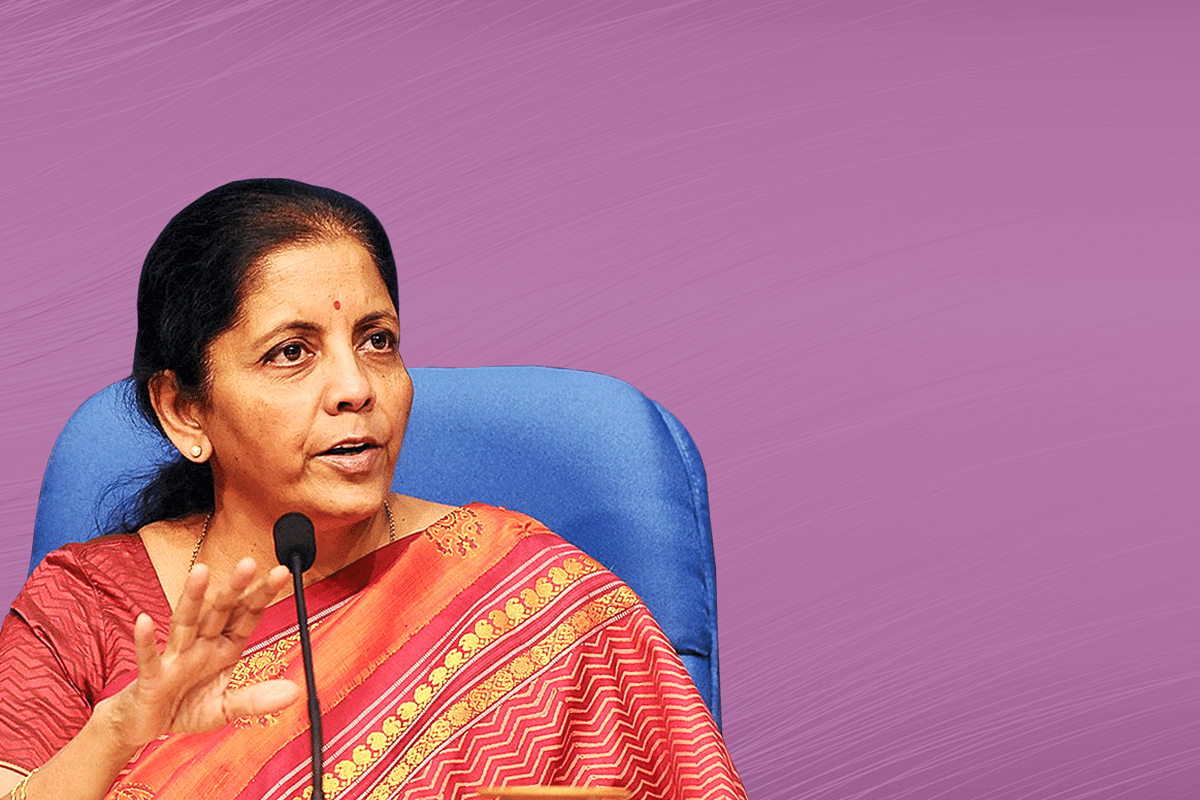Economy
Inflation Has Two Legs Now, Demand And Supply. It Needs Two Prongs For Taming, Monetary And Fiscal
- India is lucky to have a government that does not over-emphasise monetary action alone to bring down prices.
- An inflation with two legs needs two prongs of counter-attack, both monetary and fiscal.

Union Minister of Finance Nirmala Sitharaman.
The more-than-expected spike in consumer inflation to 7 per cent in August, and a similar unexpected rise in US inflation to 8.3 per cent, tells us that our inflation worries cannot be said to have peaked.
The inflation is food-led, but it cannot be presumed to have gone benign.
Two reasons why.
Unlike the recent past, inflation is not merely a supply side phenomenon.
It has two legs, both supply side disruptions and demand revival.
While the US, Europe and China are heading towards slowdowns or recessions due to interest rate hikes, in India we merely have a slight growth slowdown.
Inflation is now vulnerable both to the supply and demand factors.
Secondly, in the coming months, capital investment is expected to rise, and unemployment rates are already falling. This means more pressures from the demand side.
Last week, Finance Minister Nirmala Sitharaman said that inflation cannot be managed only through monetary measures. The fiscal and administrative side has to pitch in, and it has done so with measures to curtail exports and boost imports in sensitive commodities.
It has also cut taxes (on fuel), and levied windfall taxes on oil profits to fund the fisc.
India is lucky to have a government that does not over-emphasise monetary action alone to bring down prices.
An inflation with two legs needs two prongs of counter-attack, both monetary and fiscal.
The supply side worries centre mainly around agriculture, thanks to a wayward and uneven monsoon.
As at the start of September, the Indian Meteorological Department (IMD) said that India had received 6 per cent more rain than normal, but large parts of Uttar Pradesh, Bihar, Jharkhand and West Bengal — all key rice growing areas — had lower-than-normal rainfall.
We thus need to wait till the end of the monsoon in October to estimate what the likely loss in rice production will be.
Some of the loss can probably be made up in the winter rabi crop, but rabi is more about wheat. This part of the price equation cannot be dealt with by monetary policy.
It needs close monitoring of supplies of key cereals, vegetables, milk and other essentials, with appropriate interventions when needed.
On fuel, while global crude prices are easing due to recession worries, the rupee’s slide to 79-80 to the dollar needs Reserve Bank of India sales of dollars to prevent a fast depreciation from negating the fall in crude and gas prices.
Here, monetary policy has to complement fiscal tax cuts or increases appropriately.
As Chief Economic Advisor V Anantha Nageswaran correctly pointed out, given India’s relatively sound fundamentals compared to its trading partners, the rupee does not need defending.
But its rate of descent and volatility — assuming that is the trajectory the market wants — needs management to prevent a ruinous impact on inflation.
Demand factors in several key industries remain robust as the economy recovers.
July saw the highest monthly sales of cars at 3.42 lakh, and malls are seeing higher footfalls. There are plans to open 31 more malls over the next two years.
Online retailers are seeing boom times despite the decline in Covid cases. Amazon and Flipkart, which saw over $9.2 billion in sales during the last festive season in 2021, are preparing for another rip-roaring performance in the coming weeks.
At the top end of the demand spectrum, the stock market’s resilience is keeping the wealth effect — people tend to spend more if their stocks are performing well — on demand sturdy.
At the bottom end of the market, the demand scenario is being buttressed by a recovery in jobs, with the Periodic Labour Force Survey (April-June 2022) reporting the lowest unemployment rate of 7.6 per cent since the survey began in the first quarter of 2018.
So, we can expect three things:
One, another 35-50 basis points hike in interest rates by the Monetary Policy Committee when it meets towards the end of this month.
Two, fiscal policy to ease supply side pressures will remain agile — as it has till now.
Third, we can expect the free food scheme of 5kg per month to continue at least till early next year, because this is the only way to protect the poor from rising food inflation.
Support Swarajya's 50 Ground Reports Project & Sponsor A Story
Every general election Swarajya does a 50 ground reports project.
Aimed only at serious readers and those who appreciate the nuances of political undercurrents, the project provides a sense of India's electoral landscape. As you know, these reports are produced after considerable investment of travel, time and effort on the ground.
This time too we've kicked off the project in style and have covered over 30 constituencies already. If you're someone who appreciates such work and have enjoyed our coverage please consider sponsoring a ground report for just Rs 2999 to Rs 19,999 - it goes a long way in helping us produce more quality reportage.
You can also back this project by becoming a subscriber for as little as Rs 999 - so do click on this links and choose a plan that suits you and back us.
Click below to contribute.
Latest